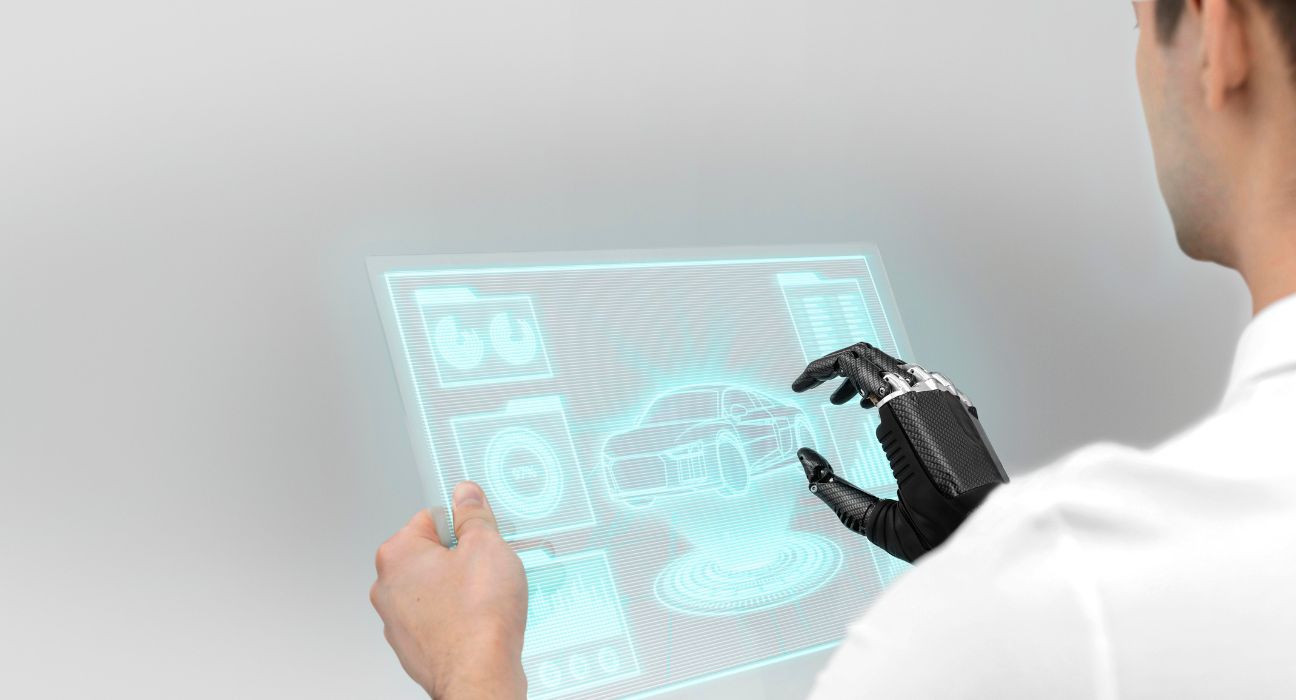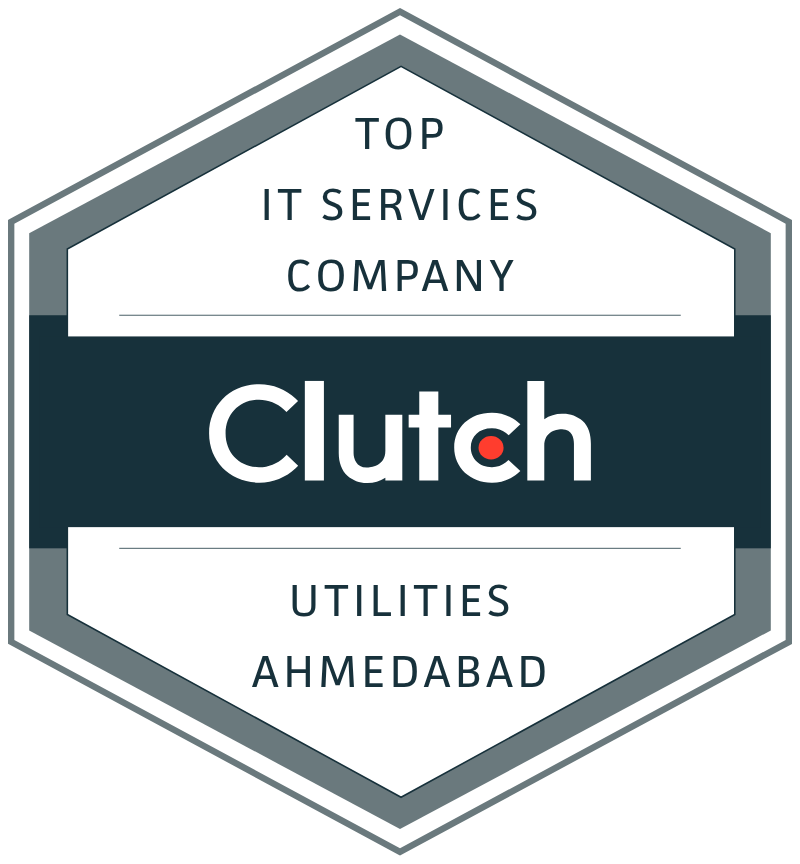Future Trends in Custom Software Development 2025

- Deval Patel

- Sep 19, 2025
In the digital era, companies should have mobile applications that can reach as many people as possible without wasting time and resources. This is where cross-platform app development helps. Rather than developing iOS and Android apps in isolation, developers can write apps that run on a common codebase, which will work well on a variety of platforms.
Cross-platform frameworks have become a significant aspect of current app development. They are quick, adaptable, and affordable, catering to high-quality user experiences. For startups and enterprises alike, these frameworks speed up product launches, ensure consistency, and reduce the overhead of managing separate teams.
The future trends in custom software development
1. The Emergence of AI-Based Development
The emergence of AI-driven development tools is one of the most important tendencies that will change custom software development in 2025. AI is not and will no longer be an improvement, but a vital partner in the development process.
- AI-Assisted Coding: AI-enabled tools, such as GitHub Copilot and ChatGPT-style code interpreters, are enabling developers to write cleaner and faster code and make it more efficient. These systems are also able to fill in complete functions, provide the best possible algorithms, and minimise repetitive techniques of coding, enabling developers to concentrate on more strategic activities.
- Smart Code Checking and Bug Detection: AIs can now analyze code bases to find vulnerabilities, logical errors, and inefficient patterns in code in real time. It not only speeds up the development lifecycle but also provides more secure and reliable applications.
- Automated Testing and Deployment: Continuous integration/continuous deployment (CI/CD) pipelines are actively embraced and are now more often enabled by AI capable of creating test cases, automatically running them, and deploying updates with such minimal human involvement.
- Individualized User Experiences: AI is also seen as directly integrated into custom applications to make user interfaces and content personalized dynamically. This results in applications that are dynamic to the use of the consumer, enhancing interaction and satisfaction.
2. Low-Code and No-Code Platforms.
The low-code/no-code (LCNC) trend is sweeping over the industry due to the democratization of software development.
- Rapid Prototyping: LCNC platforms enable companies to easily make prototypes and minimum viable products (MVPs) without major investments, as with the fully stacked development. This significantly lowers time-to-market.
- Making Citizen Developers: Non-technical employees can now get involved with the creation of software, which eliminates the reliance on traditional development teams, as well as encourages innovation between departments.
- Integration to Traditional Development: Some LCNC tools are being developed to be integrated into full-code environments, thus enabling the developer to mix drag-and-drop interfaces with custom scripts to provide more complicated logic.
- Limitations: LCNC tools are powerful but not applicable to complex and highly scalable applications and those that require high security. Full-code development is always essential in the case of systems that are critical to the missions.
3. Cloud-Native and Serverless Architectures
In 2025, the cloud-native and serverless architectures are on the frontline in supporting the custom software development, which remains a pillar developed using the cloud computing platform.
- Cloud-Native Solutions: Cloud applications Construction Teams can now construct scalable, portable, and resilient applications optimized to run on the cloud using technologies such as Kubernetes and Docker.
- Serverless Models: Serverless systems provide an abstraction over infrastructure management so that a developer can just write code. This model is automatically scaled according to the demand, minimizing the costs and overheads of operation.
- Multi-Cloud and Hybrid Strategies: To prevent vendor lock-in, enhance redundancy, and service-specific workloads, businesses are moving to using multi-cloud and hybrid environments.
- Custom Cloud Software: Developers are building applications from the ground up, keeping cloud infrastructure in mind to ensure their maximum performance, security, and cost efficiency.
4. Hyper-Personalization and UX Focus
The role of user experience (UX) in 2025 is more essential than at any point in the past, and personalization is at the center of this concept.
- Behavioral Data and AI: Analyzing user behavior, AI can be used to provide them with personalized content, interface, and workflows, so that every user of the software will use it in a manner that works best for them.
- Accessibility and Inclusivity: It is no longer an option to make accessible design, such as serving people with disabilities, supporting multiple languages, and various devices, which is now a standard requirement.
- Custom Dashboards and Workflows: Organizations are demanding extremely custom dashboards and workflows that are capable of reflecting their unique business operations, which makes their operations run smoothly.
- Mobile-First and Cross-Platform Compatibility: Since mobile use is keeping its leading position, developers are working on developing responsive designs that work well on all platforms and devices.
5. Enhanced Security by Design
Security by design is becoming a fact of negotiable custom software development with the increase in cyber threats.
- Zero-Trust Architecture: Zero-trust models are models that validate users and devices prior to access and reduce the likelihood of attack.
- DevSecOps: It has been integrated into each phase of the development process, including design and deployment, rather than being introduced as an afterthought.
- Industry-Specific Legal: Specialized software will frequently need to be able to meet industry-specific requirements for software, such as HIPAA in healthcare, or GDPR in data privacy. Developing these controls within the software makes it easy to audit and be reliable.
- Threat Detection AI: The AI algorithms are able to monitor network traffic, detect suspicious activity, and mitigate a threat on the fly, providing a reactive layer of protection.
6. Development of Industry-Specific Custom Solutions
With the increased specialization of industries, so does the software.
- Verticalized Development: Firms are now seeking niche-based solutions to their specific model of operation. The most successful examples of FinTech, HealthTech, and EdTech are the solutions that are custom-made, as opposed to generic software.
- IoT and New Hardware Integration: Programmers are creating applications that are compatible with wearables, sensors, and industrial IoT items, and allow real-time information gathering and automation.
- Tailored ERP and CRM Systems: Customized enterprise resource planning (ERP) and customer relationship management (CRM) systems are being used, rather than using generic platforms, in order to fit into the business workflow and data model.
7. Concentrate on Data-Based Development
Decisions are made using data, and 2025 is experiencing a data-centric boom in software.
- Big Data Analytics and Real-Time Insights: Custom applications are being given real-time analytics engines to make actionable insights in real-time.
- Custom Data Pipelines: Business is investing in custom data pipelines, which involve data collection, cleaning, processing, and visualization of multiple sources of data.
- AI-Based Decision Support: Content AI modules have the ability to analyze complex data and make business recommendations, making software a decision-making companion instead of a tool.
8. Sustainable and Green Software Engineering
With sustainability coming into focus as an international agenda, green software development is on the rise.
- Energy-efficient Coding: Developers are working to minimize the calculations to reduce energy consumption.
- Backend Optimization: An efficient backend process will lower the use of servers, which will indirectly decrease carbon emissions in the data centers.
- Sustainable Development Tools: Emerging platforms to quantify and reduce the environmental impact of software are also underway to influence developers to embrace environmentally friendly methods throughout the lifecycle.
9. Outsourcing, Remote Workgroups, and Worldwide Teams.
The process of developing bespoke software has evolved unrecognizably, with remote work becoming the standard approach after the pandemic.
- Cross-Border Partnerships: Companies are also outsourcing some of their projects to specialized development companies in different countries across the world so that they can tap into niche expertise and cost benefits.
- Nearshoring and Hybrid Models: A significant number of companies are mixing local and distant developers within their respective regions to find the right balance between cooperation and productivity.
- Collaboration Solutions and DevOps: Systems such as Slack, Jira, GitLab, and cloud-based DevOps pipelines are allowing distributed teams to operate as smoothly as on-site teams, with time zones and distance no longer being obstacles.
10. Regulatory and Ethical Considerations
As the use and automation of data increases, regulation and ethics are playing a central role in custom development practices.
- Inbuilt Compliance: Developers are starting with the software to encompass regulatory needs, leaving it to ensure that the software is compliant with the privacy, data protection, and industry-specific requirements.
- Ethical AI: Due to the increasing popularity of AI, the fairness, transparency, and accountability of the algorithms are significant to prevent bias and abuse.
- Open-Source Knowledge: Open-source components are a part of many custom projects, which is why it is crucial to handle licenses to avoid legal and security-related challenges.
Conclusion
Custom software development in 2025 will be a dynamic landscape that will be further propelled by AI advancement, low-code platforms, cloud native, data-centric design, and will be more sustainability- and ethics-driven. Businesses no longer want software that functions but software that can grow, expand, and provide individual experiences and remain secure and compliant.
To the organizations, particularly those that are progressive, such as Ouranos Technologies, success will be achieved by adopting these trends in advance. The keys to future-proofing the development strategies will be continuous learning, experimentation, and collaboration.
Being flexible and creative will help businesses to not only satisfy the needs of the present but also those of the future, so that their software can become one of their competitive edges in the quickly evolving digital environment.

Latest Articles
Browse All Articles
- Other
- Nov 12, 2025
AI in Automotive Industry: Benefits, Use Cases & What's Next
Discover how AI is transforming the automotive industry, from smarter manufacturing and predictive maintenance to autonomous driving and connected vehicles.

- Other
- Nov 11, 2025
How AI is Reshaping ERP: Challenges, Opportunities, and Key Trends
Discover how AI is changing ERP, from smarter automation to predictive insights and business efficiency.



